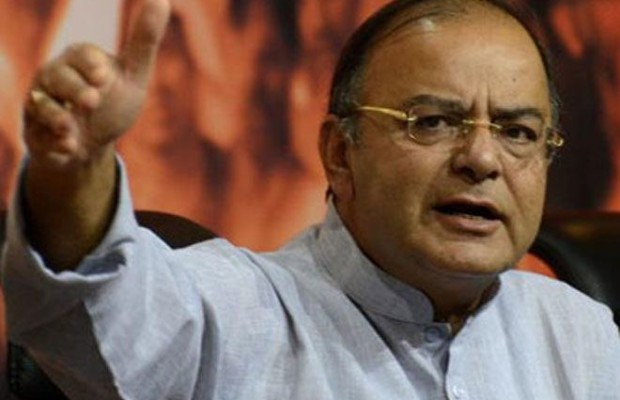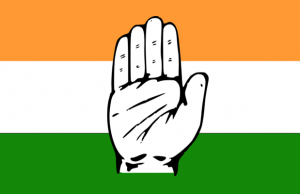THIN LINE BETWEEN LIES AND STATS

The current ruling dispensation at the Centre is fudging statistics
The Narendra Modi government has every right to pat itself on its back and announce that the incidents of farmer suicides have dropped by half. The National Crime Records Bureau (NCRB) has released data that shows a steep drop of almost 50 percent in the cases of farmer suicides in 2014 compared to 2013. The reality, however, is entirely the opposite. What the Modi Public Relations Company is not going to tell us is that the number of farmer suicides have actually increased in 2014. The NCRB did not hesitate even a bit before fudging the definition of ‘farmer’ to make us believe that they are somehow magically happier under the new regime.
Farmer suicides have consistently decreased since 2009. From over 17,000 in 2009, the figure dropped to over 11,000 in 2013. In 2014 this figure stood at over 12,000. The NCRB has cleverly changed the basic methodology and reached a slimmed down figure of 5650 suicides. Earlier, the definition of a farmer included land owner, those tilling land on lease and agricultural labour. This year, the government chose to take farm labour out of the ambit of farmer suicides. This change of definitions in an instant took 6,710 labourers who committed suicide last year out of the farmer suicide count.
To be fair, this is the first time that the government has collected specific data on farmer suicides. Earlier, suicides were recorded under various ‘profession’ heads and this included farming. This exercise never collected any data on reasons for such suicides. In 2014, such data was sought from states and compiled to assess whether the agrarian crisis led to farmer suicides — which has often been used as a direct reflection of agrarian distress. The results of this survey, which collects specific data, have been startling to say the least. According to the latest data, actual farmer suicides due to agrarian crisis, including crop failure and indebtedness, stood at merely 2,281.
State administrations have often been accused of not collecting data properly. Unless a farmer explicitly mentions crop loss or debt in his suicide note as the reason for suicide, the administration does not record it as a suicide related to farm distress. The new data, however, has some silver linings as it shows that those tilling land on lease are less prone to commit suicide. Of 5650 farmers who committed suicide as per NCRB, 4949 were land owners. Only 701 were tilling their land on a lease. The data also shows an inverse relationship between suicide by land-owners and labourers in a state. States with high land owner suicides have less labour suicides and vice-versa.
In the run-up to last year’s parliamentary elections Narendra Modi made two key promises in a rally at Pathankot in Punjab on April 24. The first was bringing back black money from tax havens of the world and the second was to ensure remunerative prices for farmers by raising the Minimum Support Prices. He then repeated the same message across the country in his numerous 3D hologram suffused rallies. The Bharatiya Janata Party’s 2014 election manifesto also underlines these promises (to be more specific it does so on Page-44). Once in power, this solemn promise also was buried in the ‘Jumlebazi dustbin’. Shockingly, the Modi government filed an affidavit in the Supreme Court on February 6 this year describing ‘cost + 50%’ formula of raising minimum support prices as a distortion.
Meanwhile, the Modi government’s procurement agencies like Food Corporation of India and Cotton Corporation of India are refusing to purchase farmer’s crops even at the prescribed Minimum Support Prices, beyond the Public Distribution System quota fixed for each State. Modi has even banned the BJP ruled States of Chhattisgarh, Madhya Pradesh and Rajasthan from distributing the already announced bonus to paddy and wheat farmers. To add insult to injury, the Modi government has increased MSP of various crops for 2014-15 in negligible spurts of Rs.50 per quintal per crop unlike the unprecedented protective umbrella and fair market prices given by Congress Party between 2004 and 2014.
Market-price of non-MSP crops like Rice particularly the basmati variant, and others such as rubber etc. have witnessed a free fall in last three months. The prices of basmati rice alone have fallen hundred percent from Rs.6000-6500 to Rs.3200-3300 per quintal in this season. Basmati replica rice varieties of 1121 and 1509, which were sold for Rs.4400-4800 last year, are being sold in a distress sale at Rs.2400-2800 per quintal this season. Cotton variety J-45 Hybrid or even J-34 Regular, which was sold at Rs.5300-5500 last year, is being sold at Rs.3800-4000 per quintal this season – well below the MSP. A similar tale is being witnessed by distressed rubber farmers, who have seen reduction in prices from Rs.175-200 per kg last year to under Rs.120 per kg this season.
After Modi assumed power, agricultural growth has gone down from 4.7% to 1.1%. Total grain output is likely to go down by one and a half crore metric tons this year. It was 2650 lakh metric tons in 2013-14 and is expected to be less than 2500 lakh metric tons in 2014-15. Latest data from the Ministry of Agriculture reflects that area under cultivation has been reduced by 33.22 lakh hectares in 2014-15. The resultant effect would be negative growth of farm sector in 2014-15 for the first time after a decade of Congress rule.
Last Rabi season witnessed the blatant sale of Urea in black market, looting of Urea stocks by mobs and the grotesque distribution of Urea in police stations in different States. The Modi government imported only 17.37 lakh tons of Urea in the crucial period of June-October, 2014, which was one third of last year’s import. On top of it, Modi government failed to pay Rs.40,000 crore of subsidy amount to domestic Urea manufacturers.
Unseasonal rains and hailstorms damaged nearly 200 lakh hectares (494 lakh acres) of Rabi crops driving the farmer to abject penury, indebtedness and finally suicide. Vide a dictatorial order of 8 April 2015; Modi government refused to grant relaxation beyond 14% in moisture norms. It was only after Rahul Gandhi’s visits to grain markets of Punjab on April 30 followed by an effective intervention by him in Parliament on May 1 that Modi government decided to relax moisture norms.
Deception and demagoguery is the art Modi knows best. But let us not forget that the cultivation of the earth is the most important labour of man. When tillage begins, other arts follow. The farmers farm in spite of their economic adversities, many frustrations and difficulties. Do you think, any government that ignores them can go a long way?




You must be logged in to post a comment Login